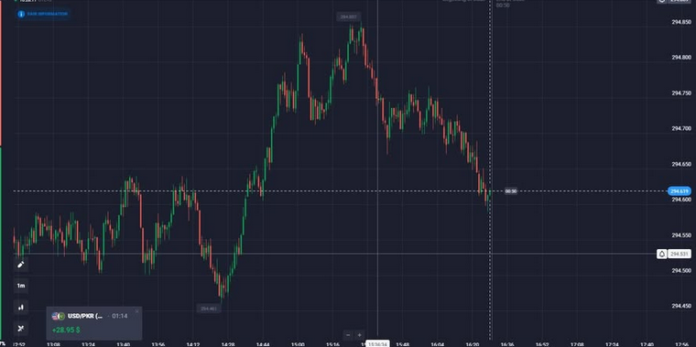Introduction
The cryptocurrency market is highly volatile, and price movements are often influenced by large investors known as crypto whales. These whales hold significant amounts of a specific cryptocurrency and can impact market prices through their buying or selling activities. Traders who can track whale movements gain a strategic advantage, as whale activity can signal upcoming trends, market reversals, or liquidity changes.
Crypto whale tracking has become an essential part of advanced trading strategies, allowing traders to anticipate market movements and react accordingly. By monitoring large transactions on the blockchain, traders can identify accumulation phases, distribution patterns, and potential pump-and-dump schemes.
This article explores the importance of whale tracking, methods used to track whale activity, key tools available, and strategies traders can implement to benefit from whale movements.
What Are Crypto Whales?
Definition of a Crypto Whale
A crypto whale is an individual or institution that holds a substantial amount of a specific cryptocurrency. These entities can influence price action due to the sheer volume of their trades. Typically, a whale is considered any holder with at least 1,000 BTC or equivalent in other cryptocurrencies.
Types of Crypto Whales
- Individual Whales – Early adopters or high-net-worth individuals who hold large amounts of crypto.
- Institutional Whales – Hedge funds, investment firms, and large companies like Tesla or MicroStrategy that have invested heavily in cryptocurrencies.
- Exchange Whales – Crypto exchanges that manage massive funds for liquidity and customer transactions.
- Mining Whales – Large-scale miners who accumulate crypto rewards over time.
Why Should Traders Track Crypto Whales?
1. Identifying Market Trends
Whales influence price action by accumulating or distributing assets. Traders who monitor large transactions can detect upcoming bullish or bearish trends before they become evident in the market.
2. Avoiding Market Manipulation
Some whales engage in pump-and-dump schemes, where they artificially inflate prices before selling off at a higher level. Tracking their movements helps traders avoid being caught in these price manipulations.
3. Improving Entry and Exit Strategies
If a whale is accumulating a specific token, it might indicate strong support levels. Conversely, if a whale is selling, it could signal a market top. Traders can use this information to optimize their buy and sell decisions.
4. Enhancing Liquidity Awareness
Whale activity impacts liquidity. A sudden movement of large funds onto an exchange could indicate an upcoming sale, leading to increased market volatility. Monitoring such events allows traders to prepare for potential price swings.
How to Track Crypto Whales?
1. Monitoring Blockchain Transactions
Since cryptocurrencies operate on public blockchains, all transactions can be viewed by anyone. Traders can track large transactions through:
- On-chain data analytics
- Whale alert bots
- Block explorers (Etherscan, Blockchain.com, etc.)
2. Whale Wallet Tracking
Many whale wallets are publicly known. Tracking these wallets can reveal accumulation or liquidation patterns. Notable platforms for wallet tracking include:
- Whale Alert – Provides real-time alerts on large transactions.
- Santiment – Analyzes whale movements and market sentiment.
- Glassnode – Offers insights into whale wallet activities.
3. Exchange Flow Analysis
Tracking funds moving into or out of exchanges helps predict major market moves. If whales transfer assets from exchanges to cold wallets, they might be preparing for long-term holding, signaling a bullish trend. If they move assets onto exchanges, a sell-off might be coming.
4. Social Media and News Sentiment Analysis
Whales often announce their trades or opinions on platforms like Twitter, Reddit, or Telegram. Monitoring these sources can provide early insights into potential whale activity.
Strategies for Traders Using Whale Tracking
1. Trading with the Whales
- Identify whale accumulation patterns.
- Enter long positions if whales are buying large amounts of a token.
- Monitor buy walls on exchanges as a signal of support.
2. Avoiding Whale-Induced Volatility
- Exit trades before large whale sell-offs.
- Be cautious when trading illiquid tokens where whale movements can create extreme volatility.
3. Leveraging Stop-Loss Orders
- If tracking data shows large sell-offs incoming, place stop-loss orders to protect capital.
- Adjust trading strategies when unusual whale activity is detected.
4. Identifying Breakout and Reversal Points
- A whale transferring funds off an exchange might indicate upcoming price increases.
- Large inflows into an exchange may signal an impending sell-off.
Case Studies: Crypto Whale Tracking in Action
Case Study 1: Tesla’s Bitcoin Purchase
In early 2021, Tesla announced a $1.5 billion Bitcoin purchase. Traders monitoring whale transactions noticed large BTC accumulations before the news became public, leading to a bullish rally to $60,000.
Case Study 2: Bitcoin Dump in May 2021
On-chain data revealed massive BTC transfers to exchanges before the market crash in May 2021. Traders who tracked these whale movements managed to exit their positions early, avoiding heavy losses.
Pros and Cons of Whale Tracking
Pros
✔ Helps detect early market trends.
✔ Reduces exposure to whale manipulation.
✔ Enhances decision-making for entry and exit points.
✔ Provides insights into liquidity movements.
Cons
❌ Not all large transactions indicate clear price trends.
❌ Requires advanced knowledge of blockchain analytics.
❌ False signals can mislead traders.
❌ Some whale movements are internal transfers and not market-related.
FAQ: Crypto Whale Tracking
1. What is a crypto whale?
A crypto whale is an entity that holds a large amount of cryptocurrency and has the power to influence market movements.
2. How can I track whale transactions?
You can track whale transactions using on-chain data analytics tools, block explorers, and real-time alert services like Whale Alert.
3. Why do whales move funds between wallets?
Whales transfer funds for various reasons, including security (cold storage), market positioning, or preparing for a large trade.
4. How do whales manipulate markets?
Some whales use pump-and-dump schemes, buy walls, or large sell-offs to influence prices and trigger trader reactions.
5. Is whale tracking effective for trading?
Yes, but it should be combined with technical and fundamental analysis for accurate trading decisions.
6. What tools are best for whale tracking?
Popular tools include Whale Alert, Santiment, Glassnode, and Etherscan.
7. Can retail traders benefit from whale tracking?
Absolutely. Tracking whales helps traders identify market trends early and avoid manipulation traps.
8. Where can I apply whale tracking strategies?
Platforms like Crypto Bank provide tools and insights to help traders optimize their strategies using whale tracking.
Conclusion
Crypto whale tracking is an essential tool for traders looking to gain an edge in the volatile cryptocurrency market. By monitoring large transactions, exchange inflows, and wallet activities, traders can anticipate market movements and make informed decisions.
While whale tracking is not a foolproof strategy, when combined with technical and fundamental analysis, it significantly enhances a trader’s ability to navigate the crypto markets efficiently. Understanding and utilizing whale tracking can be the difference between capitalizing on a market move and being caught in a downturn.















